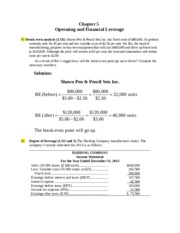Content

Moreover, inflation devalues the purchasing power of today’s currency as time goes on. For example, a five-dollar bill in the 1950s would not be able to purchase as much in the 2020s as it could in the 1950s. Unless the five dollars is earning interest at the rate of inflation, it will slowly become worthless over time. For instance, five dollars in 1950 is actually worth Present Value And Future Value Of An Annuity, Net Present Value, With Formulas And Examples about $50 in 2015. Said a different way, a 1950 dollar is worth about 10 times a 2015 dollar. The discount rate is typically the interest rate or the guaranteed rate of return that you can get on an alternative investment. The discount rate is used to calculate the present value of an asset, over and above the opportunity cost of the investment–the next best option.
How do you calculate net present value?
- NPV = Cash flow / (1 + i)^t – initial investment.
- NPV = Today's value of the expected cash flows − Today's value of invested cash.
- ROI = (Total benefits – total costs) / total costs.
NPV, or net present value, is how much an investment is worth throughout its lifetime, discounted to today’s value. The formula for NPV is often used in investment banking and accounting to determine if an investment, project, or business will be profitable in the long run. The rate at which money loses value can be very subjective since it represents the projected rate of return you would earn if you had invested today’s cash for an extended period. However, in many circumstances, https://online-accounting.net/ a risk-free rate of return is used as a proxy for the discount rate. A risk-free rate of return means that it is guaranteed that you will have the return on your investment bank, and there will not be a default. Since the time value of money is important for annuities, the concepts of present and future values are applied in the calculations of the annuities. The rate at which money loses its value and the rate at which prices rise are both due to inflation.
What is Annuity?
An annuity due is an annuity where the payments are made at the beginning of each time period; for an ordinary annuity, payments are made at the end of the time period. The expressions for the present value of such payments are summations of geometric series. Function can be used when calculating the present value of unequal future cash flows. Calculates the client’s retirement savings balance will grow to $857,593 after eight years using various interest rates over that time period.
An annuity refers to a series of equal cash flows that occur periodically such as monthly, quarterly or annually. For example, an investment that gives you fixed monthly payments for a specified period. There are two types of annuities, namely, ordinary annuities and annuities due. For example, if an individual could earn a 5% return by investing in a high-quality corporate bond, they might use a 5% discount rate when calculating the present value of an annuity. The smallest discount rate used in these calculations is the risk-free rate of return. Treasury bonds are generally considered to be the closest thing to a risk-free investment, so their return is often used for this purpose.
Examples: Using Microsoft Office Excel or OpenOffice Calc for Calculating Present Value and Future Value of Investments
If, for example, you were given a certificate for $100 of free gasoline in 1990, you could have bought a lot more gallons of gas than you could have if you were given $100 of free gas a decade later. In other words, the formula adds another component to represent the number of compounding periods.



